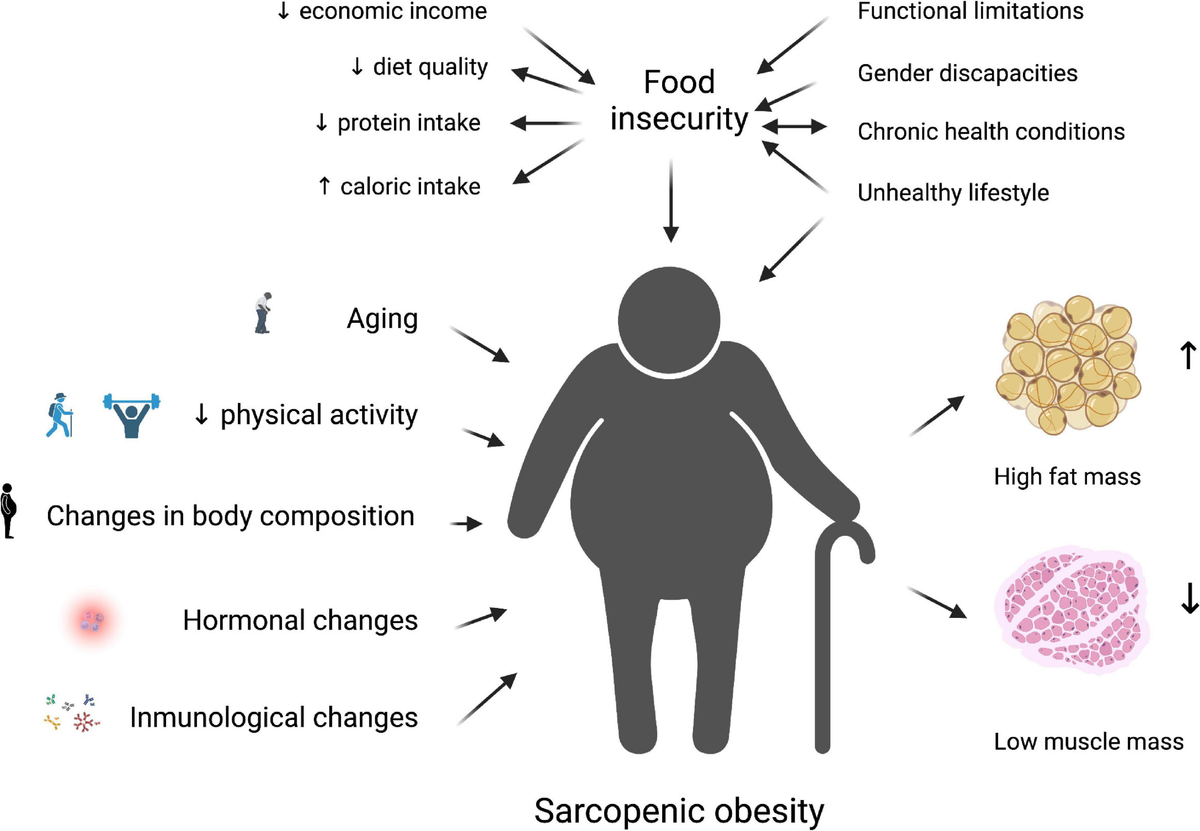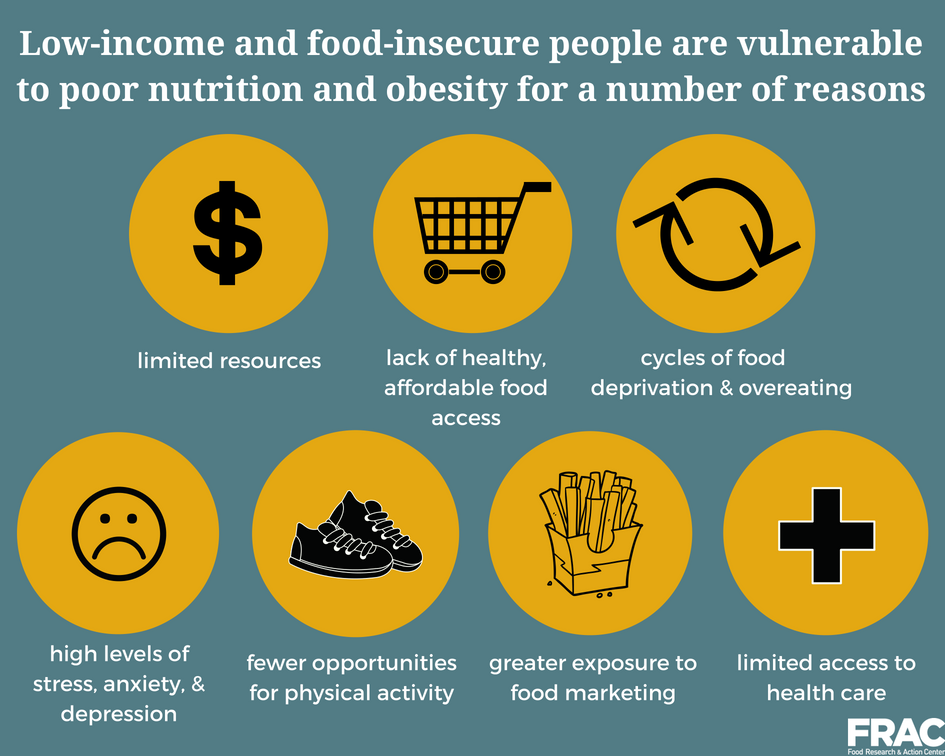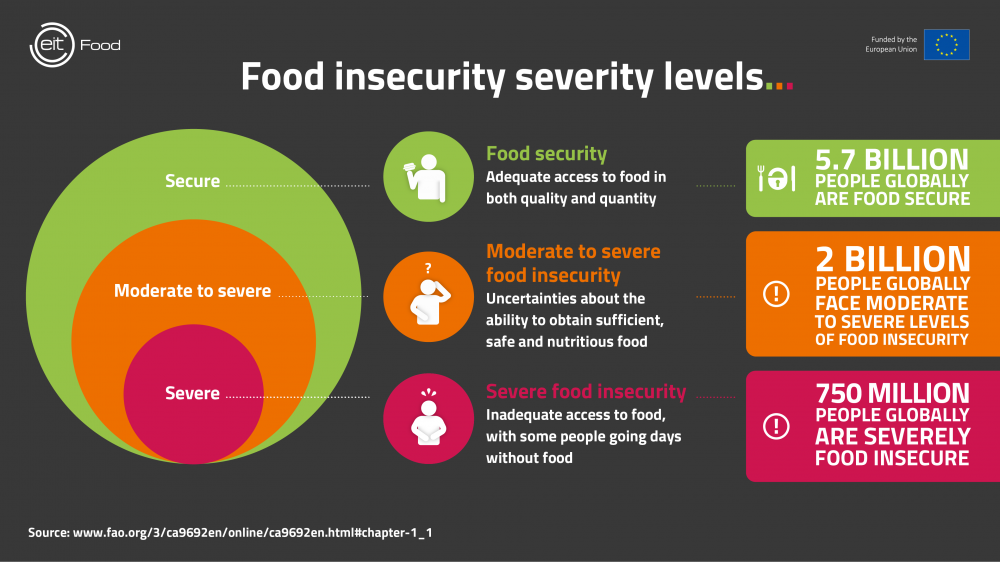Have you ever wondered how hunger and obesity can exist side by side? It might seem like a contradiction, but many people face both food insecurity and obesity at the same time.
When your access to healthy, affordable food is limited, it’s not just about feeling hungry—it can also lead to unhealthy eating habits that cause weight gain. If you want to understand why this happens and how it affects you or your community, keep reading.
This article will reveal the surprising connection between food insecurity and obesity, and what you can do to break the cycle.
Food Insecurity Causes
Food insecurity happens when people cannot get enough food to live healthy lives. Many causes lead to this problem. These causes affect families, communities, and entire countries. Understanding these causes helps find ways to reduce food insecurity and its link to obesity.
Low Income And Poverty
Low income is the main cause of food insecurity. People with little money struggle to buy enough food. High costs for rent, health care, and bills leave less money for groceries. Unemployment and low wages make it harder to afford healthy food. This can lead to poor nutrition and hunger.
Conflict And Displacement
Wars and conflicts destroy farmland and disrupt food supplies. Many people lose their homes and farms. Displaced families often live in camps with limited food access. These situations cause sudden and severe food shortages. Conflict creates unstable conditions for growing and buying food.
Climate Change Effects
Climate change causes extreme weather like floods and droughts. These events ruin crops and reduce food production. Small farmers and rural communities suffer most from these changes. Food becomes scarce and expensive, increasing hunger risks. Climate problems are growing worldwide and threaten food security.
Challenges For Small Farmers
Small farmers produce much of the world’s food but face many obstacles. They often lack training, money, and access to land. Without support, farmers cannot improve their crops or sell food well. This limits food availability and quality in many areas. Helping small farmers is key to fighting hunger.
Other Contributing Factors
Other causes of food insecurity include discrimination and health issues. Some communities lack stores with healthy food options. Transportation problems and poor infrastructure make food hard to reach. These factors add to the difficulty of getting enough nutritious food.

Credit: www.frontiersin.org
Obesity Causes
Obesity results from multiple factors that affect the body’s weight and health. Understanding these causes helps explain why obesity rates continue to rise. Some causes relate to eating habits, while others involve lifestyle or genetics. Each factor plays a role in how the body stores and uses energy.
Calorie Surplus
Eating more calories than the body burns leads to weight gain. Excess calories turn into fat and increase body weight. Many people consume high-calorie foods without enough physical activity. This imbalance creates a calorie surplus that causes obesity.
Unhealthy Diets
Diets high in sugar, fat, and processed foods contribute to obesity. These foods often lack essential nutrients and cause overeating. Food insecurity can limit access to healthy options, pushing people toward cheaper, unhealthy choices. This type of diet raises the risk of gaining excess weight.
Physical Inactivity
Not moving enough reduces the calories burned daily. Sedentary lifestyles, including long hours of sitting, contribute to weight gain. Exercise helps burn calories and maintains muscle mass. Without enough activity, the body stores more fat, increasing obesity risk.
Genetic And Environmental Factors
Genes can influence how the body stores fat and controls hunger. Some people inherit traits that make weight gain easier. Environmental factors like neighborhood safety and access to parks also affect activity levels. Together, genetics and environment shape obesity risk.
How Food Insecurity Links To Obesity
Food insecurity and obesity might seem like opposite problems. Yet, they often exist together. Many people face hunger but also struggle with weight issues. Understanding how food insecurity links to obesity helps us address both challenges effectively.
Limited Access To Healthy Foods
Food insecure individuals often lack access to fresh fruits and vegetables. Affordable options tend to be processed, high in sugar and fat. These foods are easier to find in low-income neighborhoods. Healthy food costs more and requires more preparation time. This limits choices and promotes unhealthy eating habits.
Coping Mechanisms And Overeating
People facing food insecurity may eat large amounts when food is available. This is a way to cope with uncertain food supply. Overeating high-calorie foods provides quick energy but adds excess weight. This behavior can lead to long-term health problems like obesity.
Stress And Metabolic Impact
Stress from not knowing where the next meal comes from affects the body. Stress hormones increase appetite and fat storage. This makes weight gain more likely even without overeating. Chronic stress also disrupts metabolism and causes inflammation, both linked to obesity.
Cycles Of Food Restriction And Bingeing
Food insecurity causes cycles of eating less and then overeating. During times of food scarcity, the body slows metabolism to conserve energy. When food returns, binge eating follows as a survival response. These cycles promote fat gain and increase obesity risk over time.
Populations At Risk
Food insecurity and obesity often affect the same groups of people. These populations face unique challenges that increase their risk. Understanding who is most at risk helps target support and resources effectively.
Low-income Households
Low-income households struggle to buy enough healthy food. Limited money forces choices toward cheaper, high-calorie foods. These foods often lack nutrients and lead to weight gain. Stress from financial instability also affects eating habits. This combination raises the risk of obesity in food-insecure families.
Underserved Communities
Underserved communities often lack access to fresh, affordable foods. Food deserts are common in these areas. Without nearby grocery stores, people rely on fast food and convenience stores. These options usually offer unhealthy, processed foods. Poor food quality contributes to both hunger and obesity in these communities.
Children And Adolescents
Children and adolescents face high risks from food insecurity. Poor nutrition affects their growth and development. They may overeat when food is available, causing weight gain. Limited access to healthy meals at school adds to the problem. Early exposure to unhealthy foods increases the chance of obesity later.
Rural Vs. Urban Differences
Rural areas often have fewer food stores and higher food prices. Transportation barriers make accessing healthy food harder. Urban areas may have more food options but still face food deserts. Both rural and urban populations experience food insecurity, but the causes can differ. These differences shape the risk of obesity in each setting.
Health And Social Consequences
Food insecurity and obesity create a complex health and social problem. Many people facing food insecurity struggle to access healthy foods. They often rely on cheaper, calorie-dense options. This imbalance leads to serious health issues and social challenges that affect individuals and communities.
Chronic Disease Risks
Obesity linked to food insecurity raises the risk of chronic diseases. These include diabetes, heart disease, and high blood pressure. Poor diet quality and irregular eating patterns worsen these conditions. Managing chronic illnesses becomes harder without stable access to nutritious food.
Mental Health Challenges
Food insecurity and obesity also impact mental health. Stress about food availability can cause anxiety and depression. Body image issues and social stigma add to emotional distress. Mental health struggles reduce overall well-being and daily functioning.
Economic Burdens
The costs of health problems related to food insecurity and obesity are high. Medical bills, lost workdays, and disability reduce financial stability. Families may spend more on emergency care and less on prevention. This cycle keeps many trapped in poverty and poor health.
Impact On Quality Of Life
Food insecurity and obesity lower quality of life in many ways. People face limited energy and physical activity. Social isolation can result from stigma and health limitations. Children may experience poor growth and learning difficulties. Overall, life satisfaction and opportunities decline.

Credit: frac.org
Strategies To Address The Link
Addressing the link between food insecurity and obesity requires practical strategies. These strategies focus on improving access to healthy foods, educating people about nutrition, and supporting community efforts. Each approach plays a key role in reducing both hunger and obesity rates.
Improving Food Access
Many people face challenges finding fresh, affordable foods. Expanding grocery stores and farmers markets in underserved areas helps. Mobile food markets and food delivery services can reach those who cannot travel easily. Making healthy food available reduces reliance on processed, high-calorie options.
Nutrition Education
Teaching simple nutrition helps people make better food choices. Schools and community centers can offer easy-to-understand lessons. Sharing recipes that use affordable, healthy ingredients encourages cooking at home. Learning about portion control and balanced meals also supports healthier lifestyles.
Policy And Community Programs
Government policies can increase food assistance and nutrition programs. Programs like SNAP and WIC provide funds for nutritious foods. Local initiatives can offer free or low-cost meals and snacks. Policies that limit sugary drinks and junk food in schools also improve health outcomes.
Supporting Local Agriculture
Helping local farmers strengthens food systems and boosts fresh food supplies. Community gardens and urban farms bring food production closer to neighborhoods. Farmers markets give direct access to seasonal fruits and vegetables. Supporting local agriculture creates jobs and improves food security.

Credit: www.eitfood.eu
Conclusion
Food insecurity and obesity often exist together in many communities. Limited money forces choices toward cheaper, unhealthy foods. These foods are high in calories but low in nutrients. This leads to weight gain and poor health over time. Fighting food insecurity requires better access to affordable, healthy options.
Communities need support to break this harmful cycle. Awareness and action can help improve lives and health outcomes. Everyone deserves enough nutritious food for a healthy life.



